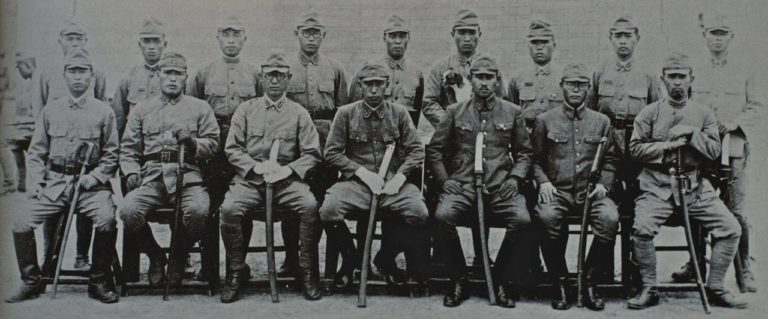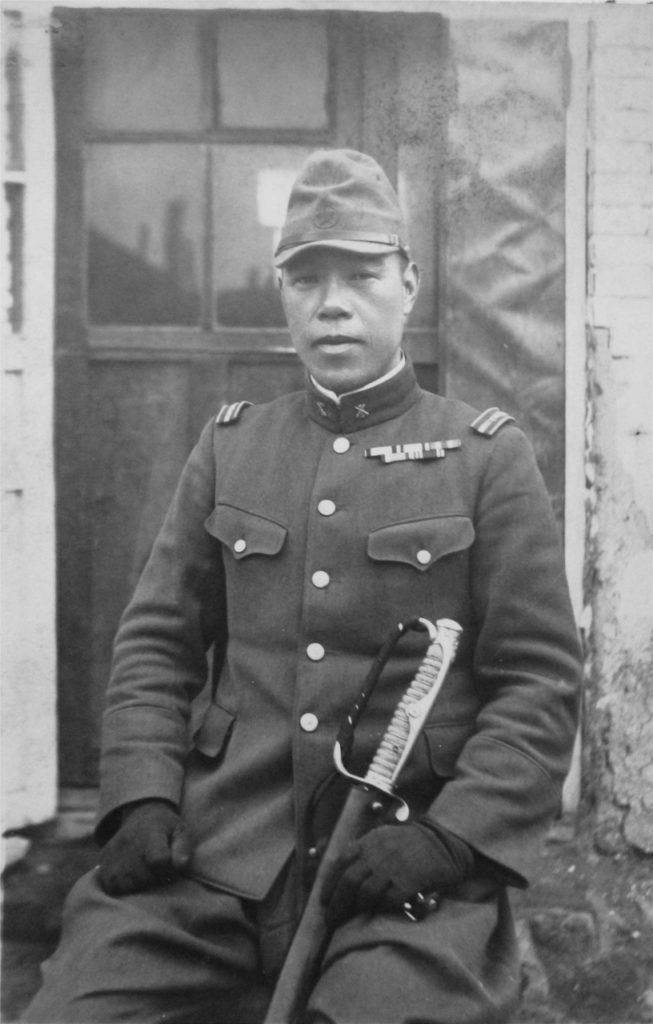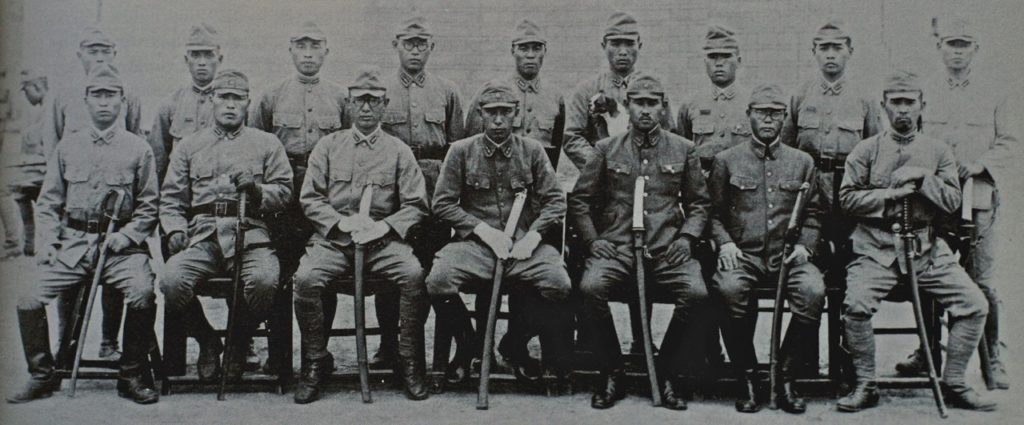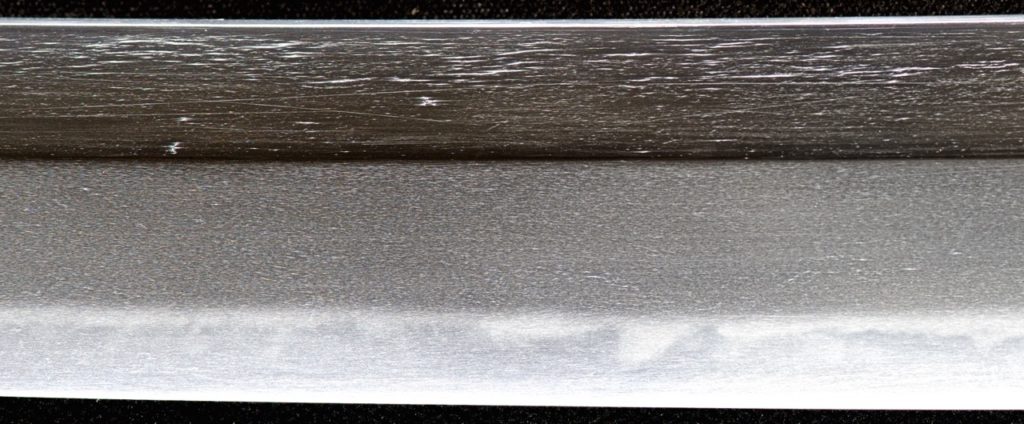
By Leon Kapp
Japanese swords are iconic as ever
It was over seven long decades ago on Sept. 2, 1945, that the Japanese signed the agreement formalizing their surrender, for all intents and purposes officially marking the end of the Second World War. The ceremony aboard the deck of the USS Missouri in Tokyo Bay took all of 23 minutes to close the book on a conflict that extinguished more lives and destroyed more goods and property than any before or since.
While the world has changed much since then, one of the most iconic symbols that existed long before and throughout World War II—and continues to resonate today—is the Japanese sword.
TRADITIONAL vs. WWII SWORDS
Traditional Japanese swords have been made for almost 1500 years, with the fully modern Japanese sword appearing during the Kamakura period from 1185 to 1334. Japanese swords were the symbol and badge of the Samurai class right up to the beginning of the Meiji period (1868-1926) when Japan began to modernize. At the beginning of the Meiji period, the demand for swords fell drastically, and, by the early 1900s, very few swordsmiths were still working—and even fewer were making swords as a full time profession. There was not much of a demand for swords at this time, and what demand existed was satisfied by the existing stock of swords made right before the beginning of the Meiji Restoration.
In addition, a new type of sword had been designed for the Japanese army. These were called Murata To or Murata swords. They were forged from foundry steel and had a simple hamon (aka temper line) made by quenching in oil rather than water. Generally, these were light and thin compared to traditional swords and were mounted in European-style mountings.

However, by the 1930s Japanese military forces were rapidly expanding, and the leaders of the Japanese military organizations decided that all officers in the army and navy should carry a traditional Japanese sword to constantly remind them of their cultural heritage. This led to the development of a new style of sword mounting (koshirae), and also efforts to train new swordsmiths and ensure the new swords were made to traditional specifications and quality.
It was decided that all officers should carry a sword, and that meant that about 20 percent of army personnel and about half of navy personnel were eligible to carry swords. From the information provided by Yasukuni Shrine, this meant that around 2 million Japanese military personnel were eligible to wear swords. Some estimates from historical data suggest that about 2 million swords were produced in Japan from the 11th to the 19th century. This meant that the military wanted to produce almost as many swords in the 20th century as had been made in the previous 800 to 900 years.

This was a very large number of swords to make, and there were not enough smiths or material available to make so many swords. It has been estimated that the town of Seki probably produced about 70 percent of the wartime swords, and the rest of the production took place all over Japan. With this scale of production, it was impossible that all swords could be made to strict historical standards. There simply were not enough smiths or enough of the traditional Japanese steel called tama hagane to do so.
JAPANESE SWORD STEELS
As a result, several types of swords were made during the period. The best ones were made from tama hagane and were fully traditional in terms of hamon and shape. Since there was a shortage of tama hagane and time, many swords were also made from puddled steel, a type of steel made in Europe during the late 1800s and early 1900s. Japan imported this type of steel for railroad rails. When the railroad tracks were replaced, the puddled steel was salvaged for use in swords. Apparently, there was a large supply of puddled steel, and it became the favorite substitute for tama hagane. The quality of the puddled steel was very good. In fact, the Eiffel Tower was also constructed from this type of steel.
The resulting swords have a visible jihada (surface pattern) and hamon, and were very hard to distinguish from tama hagane swords. Japanese military authorities were concerned about this, and, by 1940, a regulation was passed requiring that any Japanese sword not made from tama hagane must have a stamp on the tang indicating as much. Hence, from 1940 all swords had to be signed, and if they were not made from tama hagane there would be a stamp on the tang above the signature solely to indicate as much.

The swords made from puddled steel appear to be identical to tama hagane swords, but a high-quality polish can reveal differences in the surface and jihada. In addition, the hamon on puddled steel swords have characteristic differences from hamon on tama hagane swords, and it requires experience to recognize the differences.

Other swords were made from foundry steel and have no jihada and often no hamon, either. Many are found in mounts or koshirae that are different from the standard World War II koshirae, and serial numbers may be stamped on the blade, or they appear to be modeled after European-style blades and mounts. The Japanese cavalry used many of these swords early in the 20th century, as did the police and civilian workers. The swords also were worn in parades or for formal occasions. In general, these other types of blades are easy to distinguish from traditional swords.

MOST IMPORTANT MAKERS OF MODERN JAPANESE SWORDS
The most important makers of modern Japanese swords were found in Seki, in the Nippon To Denshujo, and at Yasukuni Shrine. Yasukuni Shrine and the Nippon To Denshujo were in Tokyo, and there were other organizations located all around Japan. Yasukuni Shrine’s forging group was established in 1933 with the support of military officials, and all the smiths took names beginning with Yasu, such as Yasunori, Yasuoki, Yasutoku, Yasumitsu, etc. All of these swords are collectible and sought after today.

The Yasukuni smiths were expected to make everything by hand in a completely traditional manner and with no power tools. Ideally, one smith working with two assistants or hammer men (sakite) was expected to produce between 10 and 15 swords a month. Yasukuni swords were unique in one other interesting respect: the smiths were asked to model their work after specific blades made by Mitsutada of Bizen Province from around the mid-1200s. Thus, most of their work followed a consistent pattern, and Yasukuni swords are usually recognizable today by their shape, hamon and general style.
Next time, in the conclusion: Such great Japanese swordsmiths as Kurihara Akihide, Yoshihara Kuniie, Kasama Shigetsugu and others, the role of Seki city, the Manchurian Railway Co., war-era koshirae, Japanese army and navy swords, Japanese swords as war souvenirs and more.
GLOSSARY of JAPANESE SWORD TERMS
Hamon—temper line
Jihada—blade surface pattern
Koshirae—sword mounting
Puddled steel—steel from railroad rails used to make Japanese sword blades
Sakite—swordsmith’s assistants or hammer men
Tama hagane—traditional steel for Japanese sword blades
 NEXT STEP: Download Your Free KNIFE GUIDE Issue of BLADE Magazine
NEXT STEP: Download Your Free KNIFE GUIDE Issue of BLADE Magazine
BLADE’s annual Knife Guide Issue features the newest knives and sharpeners, plus knife and axe reviews, knife sheaths, kit knives and a Knife Industry Directory.Get your FREE digital PDF instant download of the annual Knife Guide. No, really! We will email it to you right now when you subscribe to the BLADE email newsletter.







Terkasih atas artikel yang mengagumkan tentang provinsi-provinsi dan geografi Indonesia! Sungguh menarik untuk mempelajari lanskap dan budaya yang beragam di kepulauan ini. Saya sangat menghargai usaha Anda menyajikan gambaran yang komprehensif. Ada rekomendasi pribadi untuk tempat wajib dikunjungi atau tempat tersembunyi di provinsi-provinsi Indonesia? Saya sangat bersemangat untuk menjelajahi lebih banyak dan akan sangat senang mendapatkan wawasan lokal! ️✨
Because of the internet, we now have access to wartime archives and other collectors around the world. We have recently uncovered WWII Japanese regulations for the Rikugun Jumei Tosho (RJT) program that used the star stamp. Smiths who qualified (2 blades submitted for approval) were to make their blades with Army supplied tamahagane and forge them using traditional methods. Such blades received the star stamp, marking them as using Army provided steel, which for the RJT program, as stated, had to be tamahagane. So, unlike many of the other stamps seen on war blades, the star actually tells us the blades was made traditionally, as gendaito.
I have been studying these and have a database of around 60 star-stamped blades. They are all on RJT smith blades. No star stamps are found on blades of non-RJT qualified smiths. If the star had meant the blades were NOT made with tamahagane, the massive majority of war blades would have to bear the mark. But just the opposite is true – the star is rare and only found on blades made by RJT smiths.
The best place for that is the Nihonto Message Board, Translation Assistance Forum:
https://www.militaria.co.za/nmb/forum/15-translation-assistance/
I need to find someone knowledgable in WW@ Japanese swords. I have one that was offered a fairly good amount back in the 90’s but now nobody has the time to look at it. I have pictures but have yet to find anyone who can say even who the maker was. If you cannot help could you direct me to someone that has the expertise or knowledge to look at it?